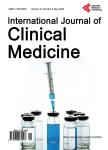Do the Right Patients use the Ambulance Service in South-Eastern Finland?-A Prospective Descriptive Study of Ambulance Dispatching in Relation to the Ambulance Staff’s Assessment of Patients’Needs in a Subset in the South East of Finland
做正确的患者使用芬兰东部的救护车服务?-A的前瞻性描述性研究的关系救护车调度救护人员评估病人的需要,在芬兰东南部的一个子集作者机构:University of BorasBorasSweden Nordic School of Public HealthGoteborgSweden Center for Health System AnalysisGothenburgSweden Tampere UniversityTampereFinland Karolinska InstitutetStockholmSweden
出 版 物:《International Journal of Clinical Medicine》 (临床医学国际期刊(英文))
年 卷 期:2011年第2卷第5期
页 面:544-549页
学科分类:1002[医学-临床医学] 100214[医学-肿瘤学] 10[医学]
主 题:Ambulance Dispatching Emergency Medical Services Prioritizing
摘 要:Background: Several Emergency Medical Systems use a criteria-based prioritization system for ambulance response. The emergency medical priority dispatching of ambulances was introduced in the 1980s. In a system of this kind, the operators at the medical emergency dispatch centers have to assess the patients’ symptoms and the need for ambulance response. The prioritization of the ambulance response is based on the seriousness of the patient’s symptoms, his/her current condition and, in the case of trauma, the trauma mechanism. The priority system is supposed to optimize the use of the ambulance service and to match and meet the patients’ needs with an adequate response from the ambulances. The aim of this study was to describe the dispatching and utilization of the ambulance service in a part of Finland. Results: There was a substantial divergence between the initial priority assigned and the patients’ medical status at the scene. The ambulance staff confirmed the need for ambulance transport for 65% of all the patients who were assigned an ambulance by the dispatch center. Conclusions: Using a criteria-based dispatch protocol, the dispatch operator works with a wider safety margin in the priority assessments for ambulance response than was actually confirmed by the ambulance personnel at the scene. In this sample, there may be some overuse of the ambulance service. According to the assessments made by the ambulance staff, 35% of the patients did not require ambulance transport. The emergency system has to accept and work with safety margins. At the same time, there must be a balance between a safety margin and a waste of limited resources.



